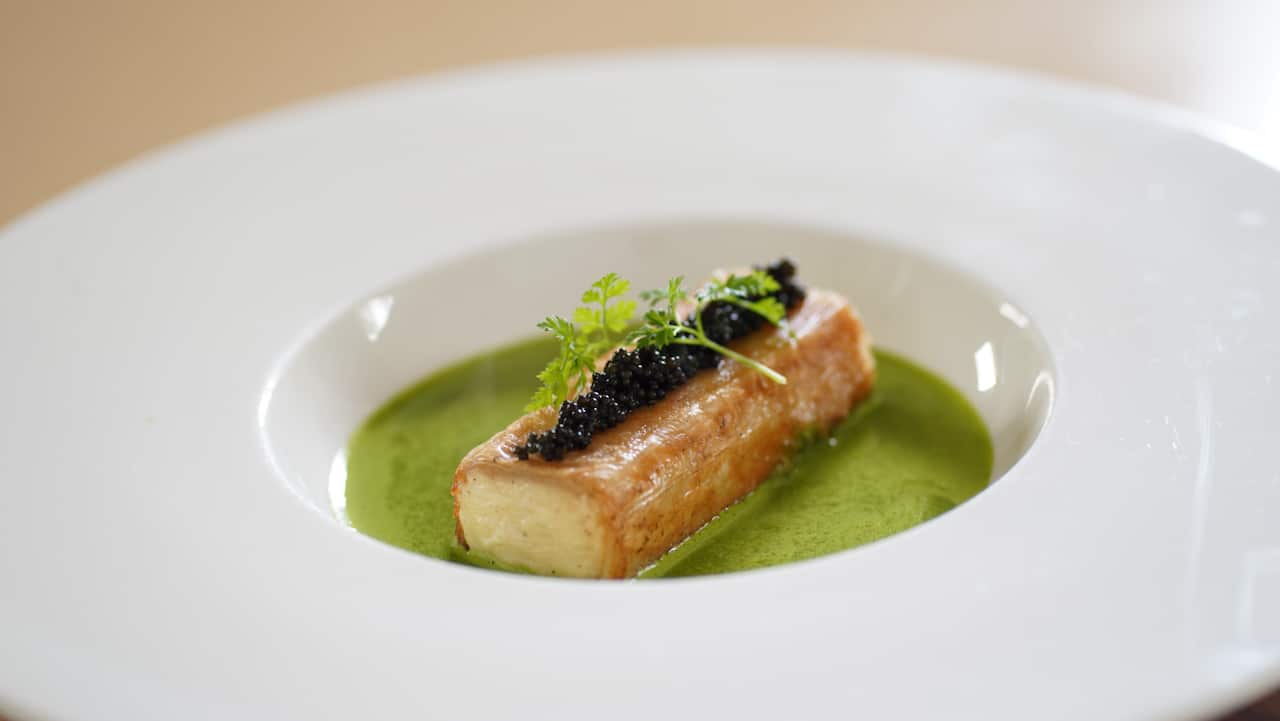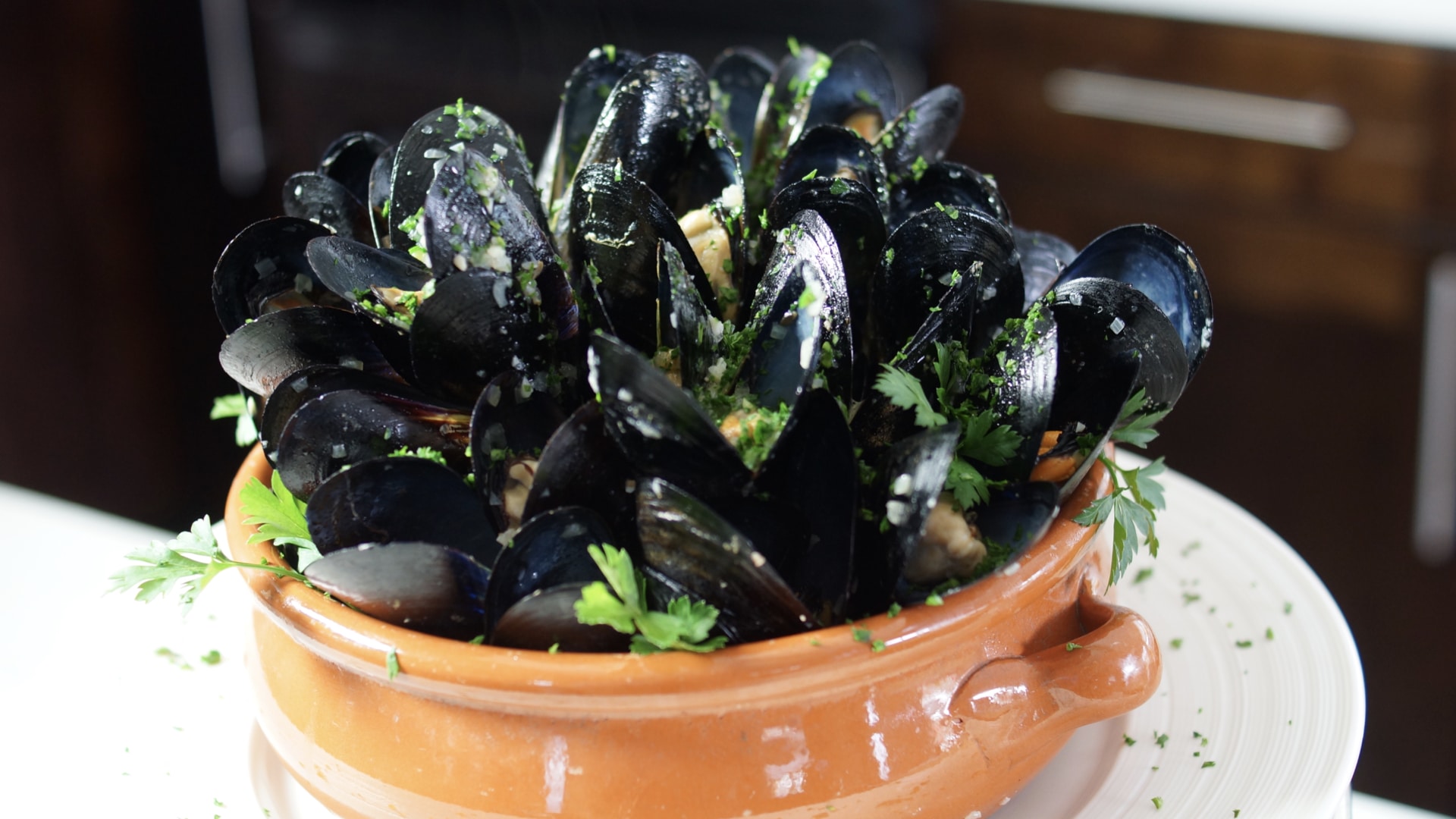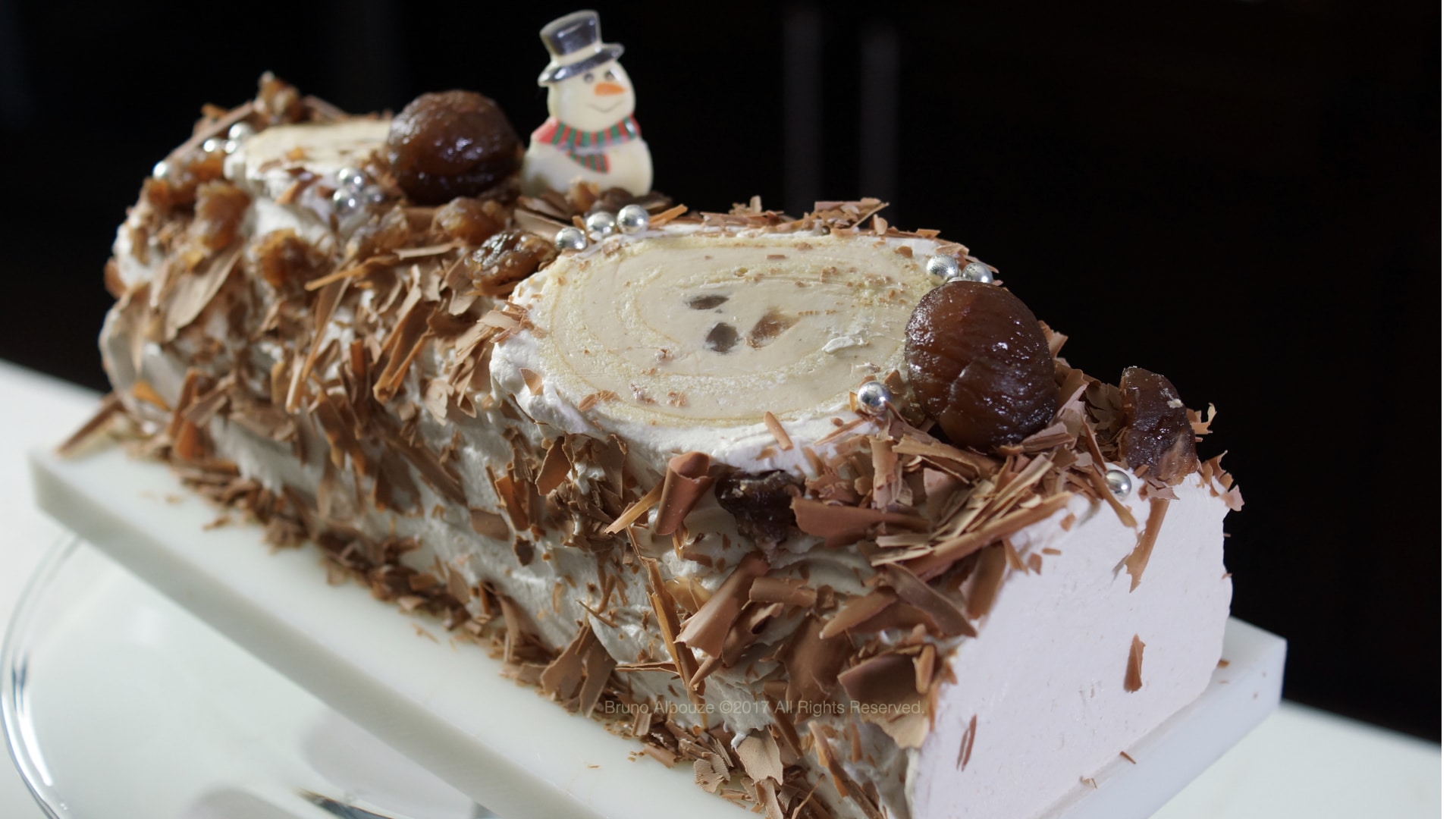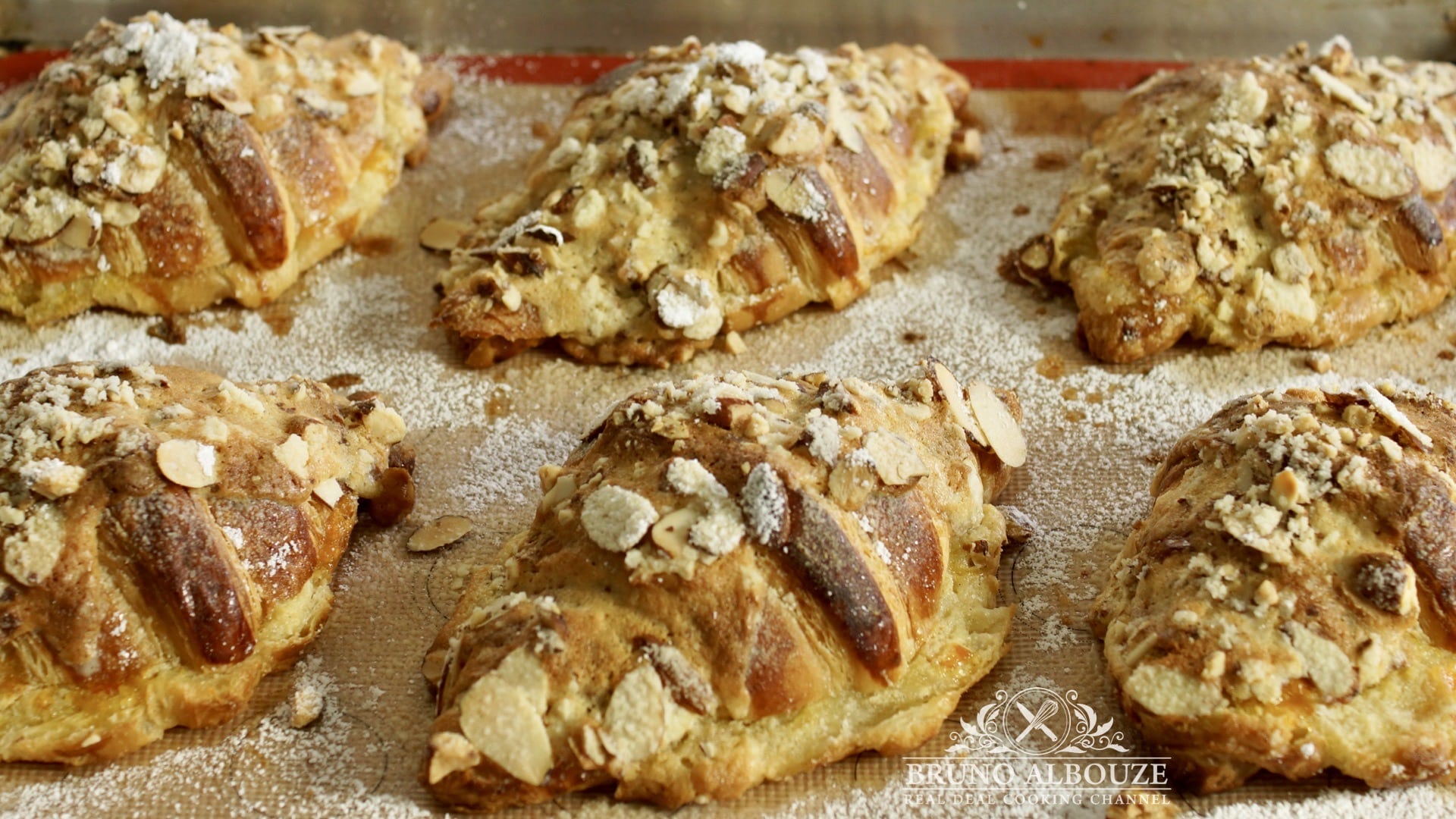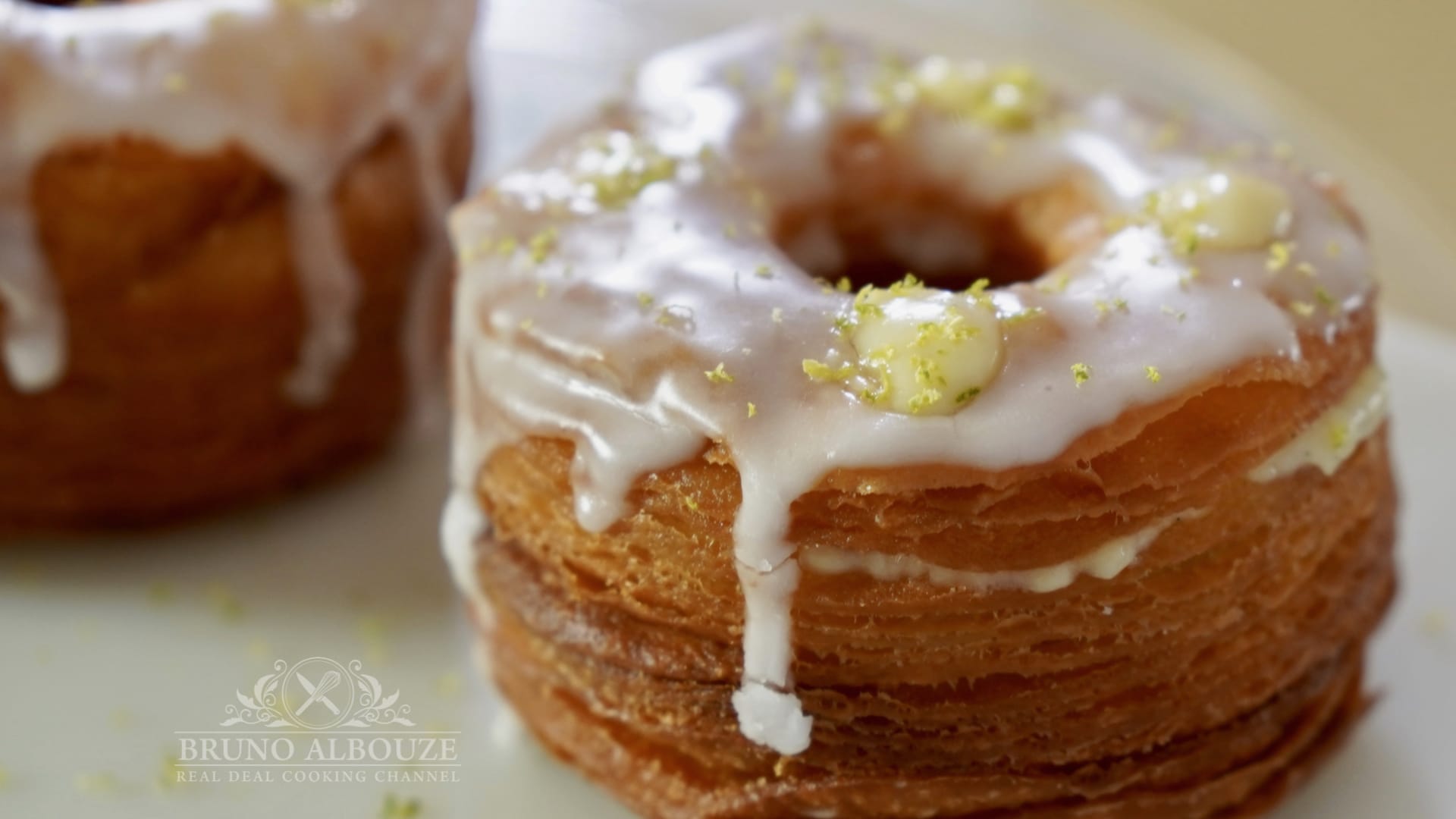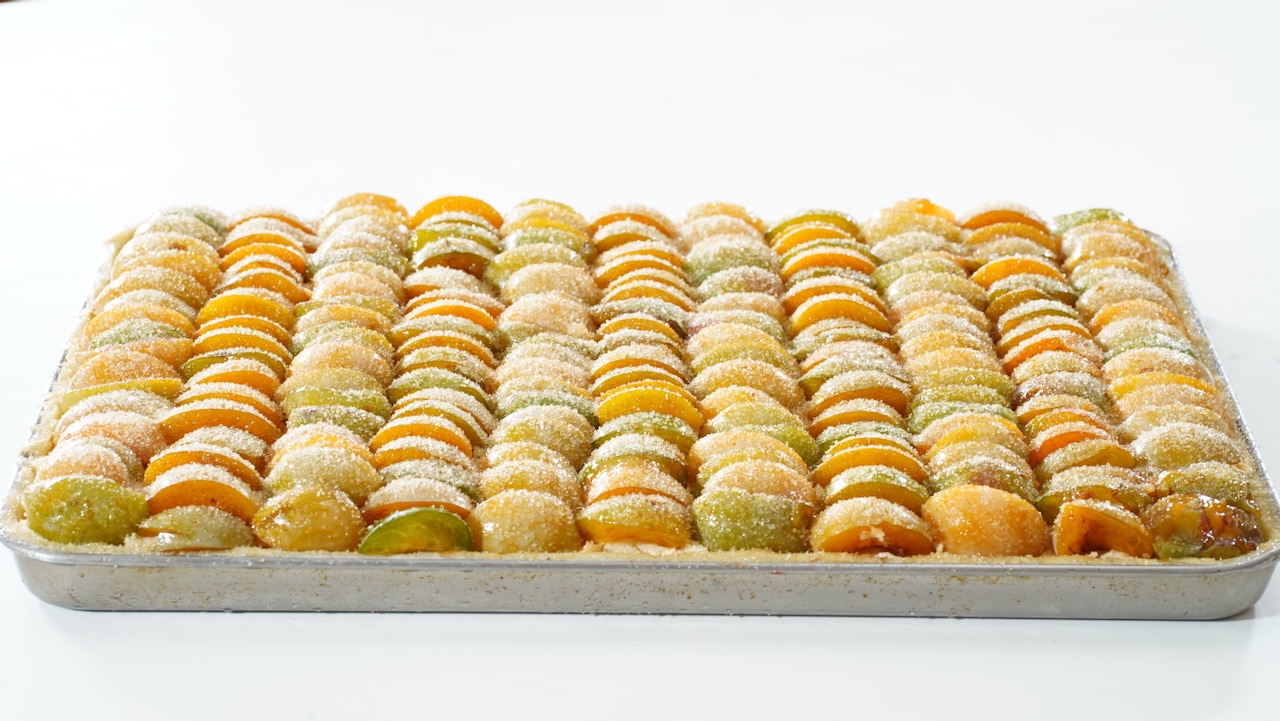Turkey Leg Roulade
Let us liberate Thanksgiving from the tyranny of the whole bird. This year, we trade the sprawling, often-anxiety-inducing centerpiece for a masterpiece of concentrated flavor and foolproof elegance: the Turkey Leg Roulade. Instead of brining and roasting a complete turkey—a challenging task that pits dry breast against underdone thighs—I propose a fantastic alternative. We focus on the most succulent part, the legs, transforming them into a stunning, deboned roulade. En premier, you will learn how to easily debone two turkey legs. These will be rolled around an exquisite, deeply savory stuffing. We gently ground the bird's own breast meat to ensure tenderness, then combine it with a luxurious duxelles of black chanterelle sautéed with shallots and the rich livers, all glistening in decadent duck fat. But no masterpiece is complete without its foundation. The saved bones are not discarded; they are our secret weapon. Browned in the oven with a classic mirepoix, they are then slowly reduced in a rich chicken stock. This deeply savory base is then added to the rendered jus from the roast, and finished with a brilliant, tangy swirl of blackcurrant puree. 🦃
Please note that the full access to this content needs a subscription: please sign up.
The Ultimate Thanksgiving Turkey Roulade
This recipe is a protected and only available for paid members. To obtain the full step by step recipe and detailed ingredients list, please sign up.
Preview the recipe
Deboning a Turkey Leg
- You will need 2 deboned turkey legs to complete the roulade recipe. One stuffed turkey leg roulade weights 3.9lb./1.8kg. It makes 8 servings once cooked.
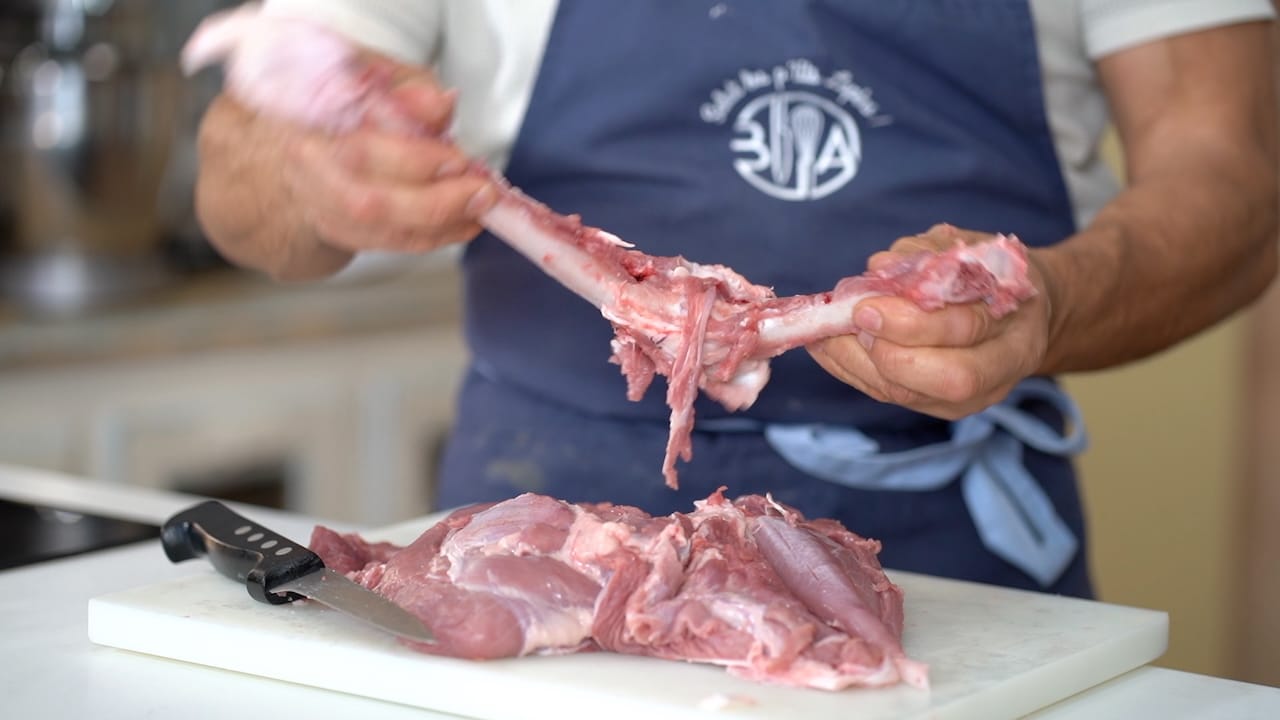
Seasoning (A night before cooking)
- Season dark meat flesh only with the grey salt (½-ounce/14g per leg) and pepper.

- Roll the meat, place in a shallow dish and refrigerate overnight. The grey salt will dissolve into the meat's surface, drawing out moisture that is then reabsorbed to tenderize and season it.
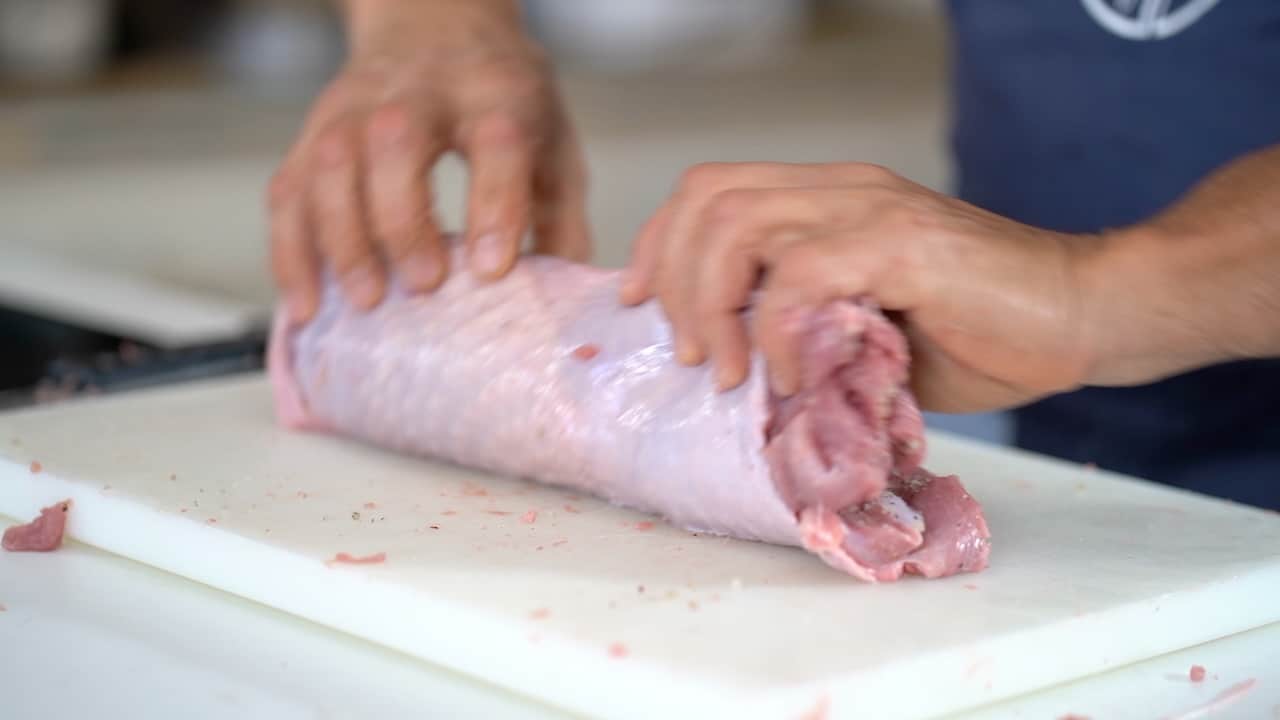
Cleaning Turkey Tender
- Turkey tenders (also tenderloins) are the long, narrow strips of meat that sit just under the turkey breast.

- Remove any visible connective tissues.
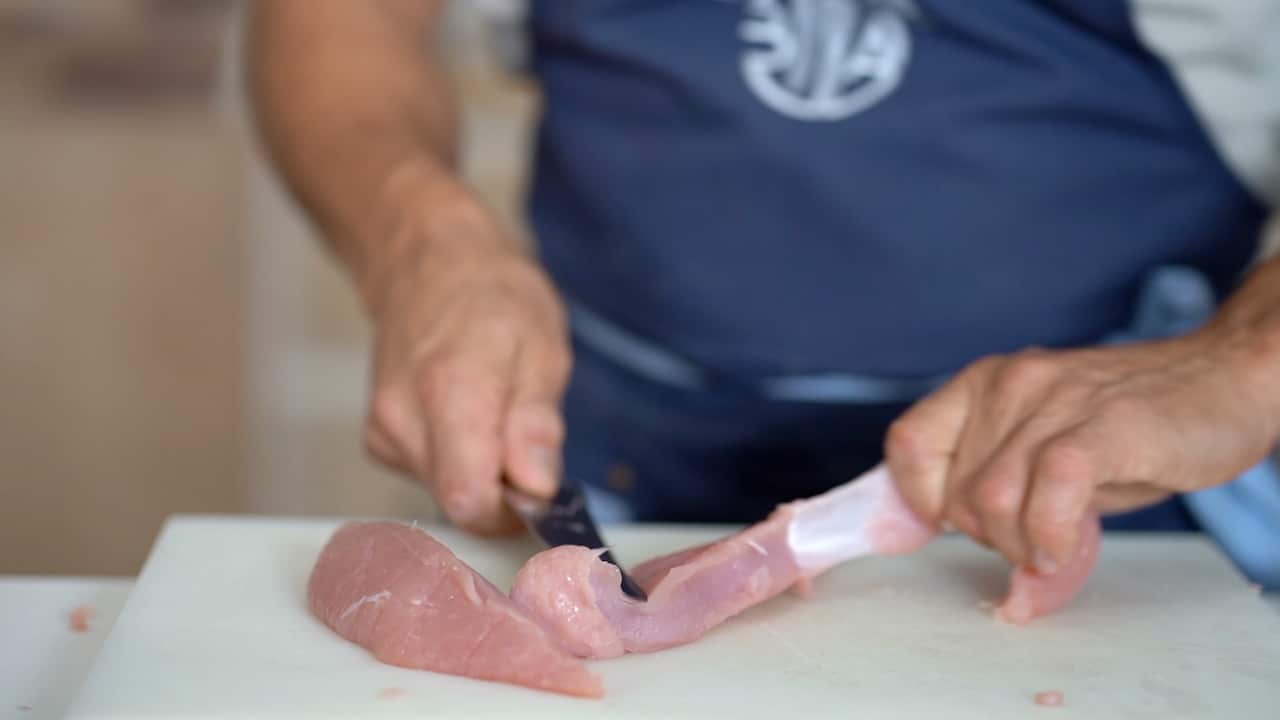
- Cut tenders into chunks and refrigerate.

Stuffing
- Put an empty and clean shallow dish in the freezer. In a skillet, melt duck fat and sweat shallots for 5 minutes until fragrant on medium heat.

- Add the pureed garlic, the chopped mushrooms, porcini powder and cook for 5 minute on medium heat.

- Add the cleaned chicken livers, salt and pepper and sauté on high heat for 5 minutes (livers shall be seared on both sides).

- Remove skillet from the heat and transfer mixture to the frozen shallow dish to cool faster, then keep refrigerated.

- Meanwhile in the food processor, gently pulse the cold tender chunks (do not puree).
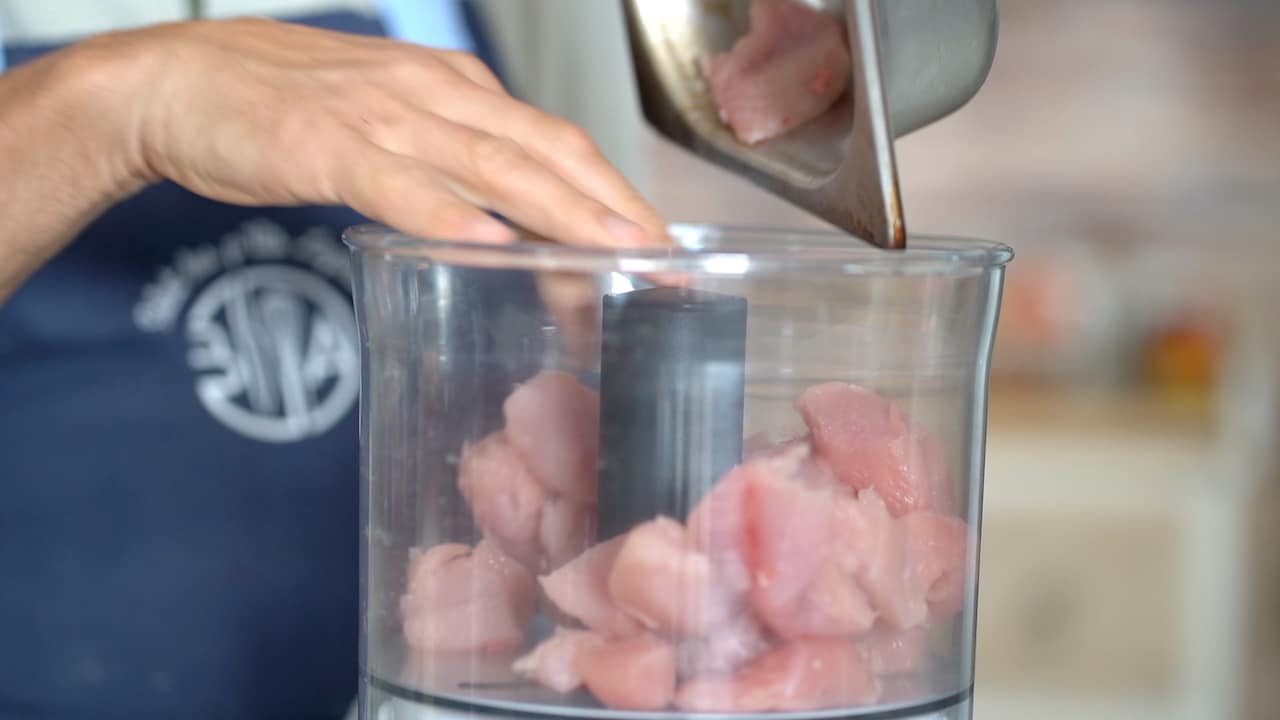
- Add the heavy cream, the egg and the parmesan. Give a couple pulses to combine.
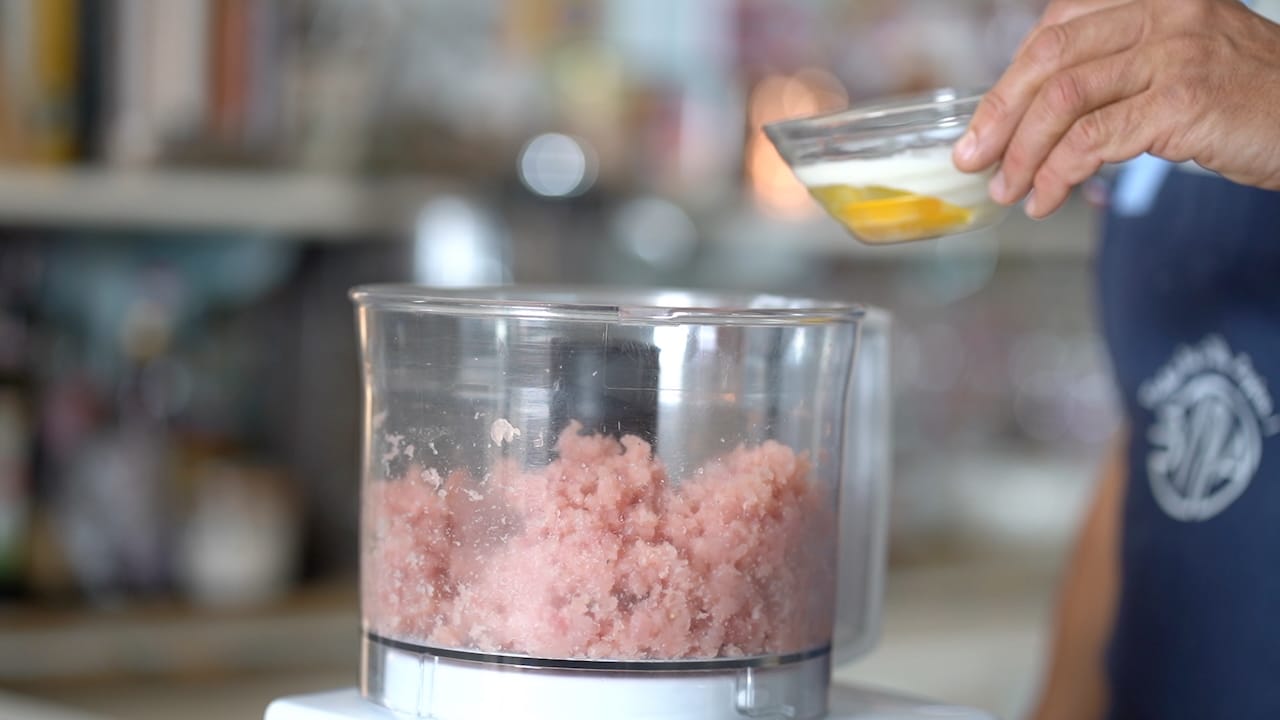
- Transfer the turkey tender mixture to a large bowl and fold in the chilled shallots-chicken livers mixture. Place the stuffing in the refrigerator.
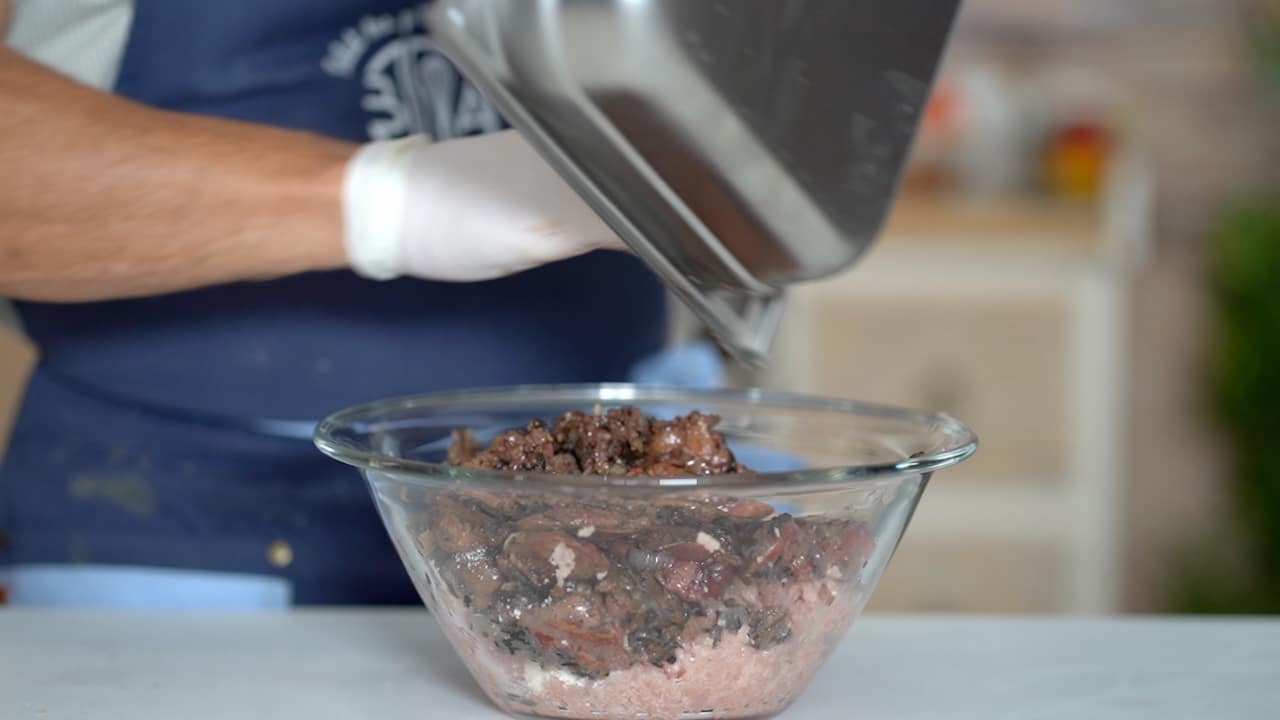
Turkey Roulade
- Lay a couple of large plastic wrap rectangles onto a moistened countertop so the plastic sticks (use a wet, squeezed-out sponge).

- Arrange the seasoned turkey legs next to each other, skin-side down.
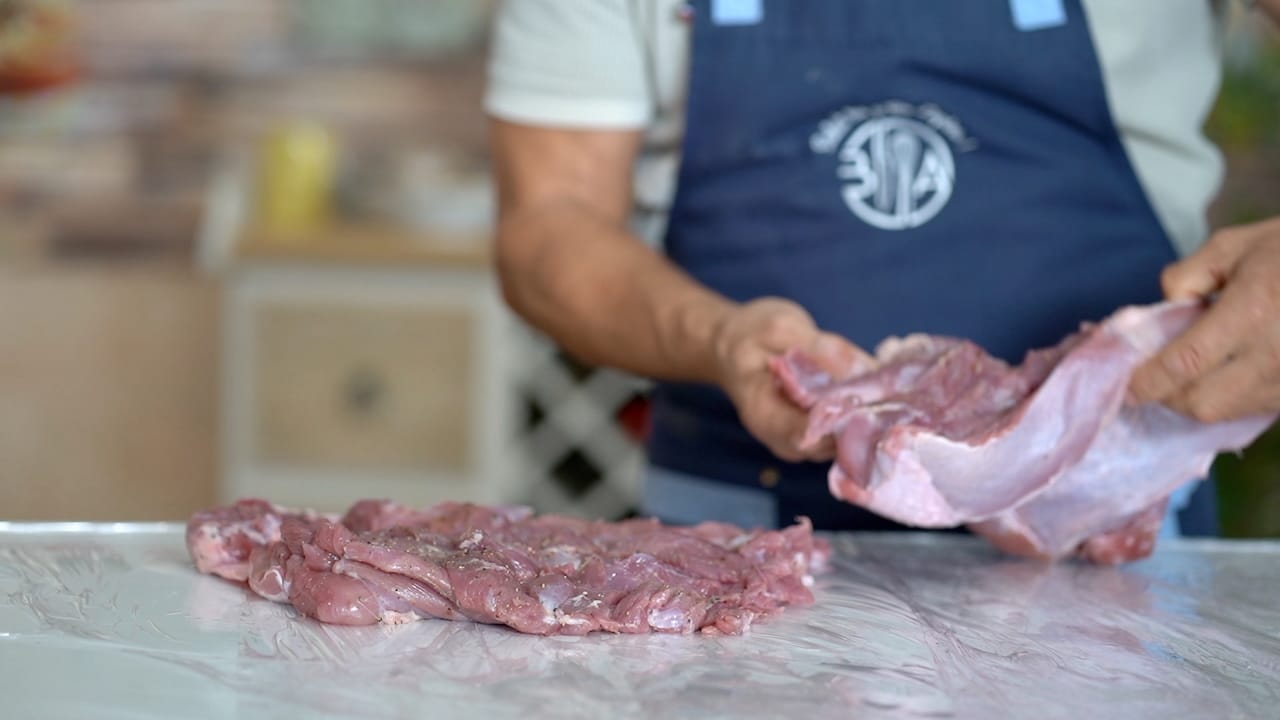
- Add the stuffing and shape it into a log.

- Begin to roll the stuffed meat into a thick cylinder.

- Then grab the plastic wrap, and start to envelop the roulade tightly. If air bubbles are trapped, prick the plastic with a toothpick only where it needs it.
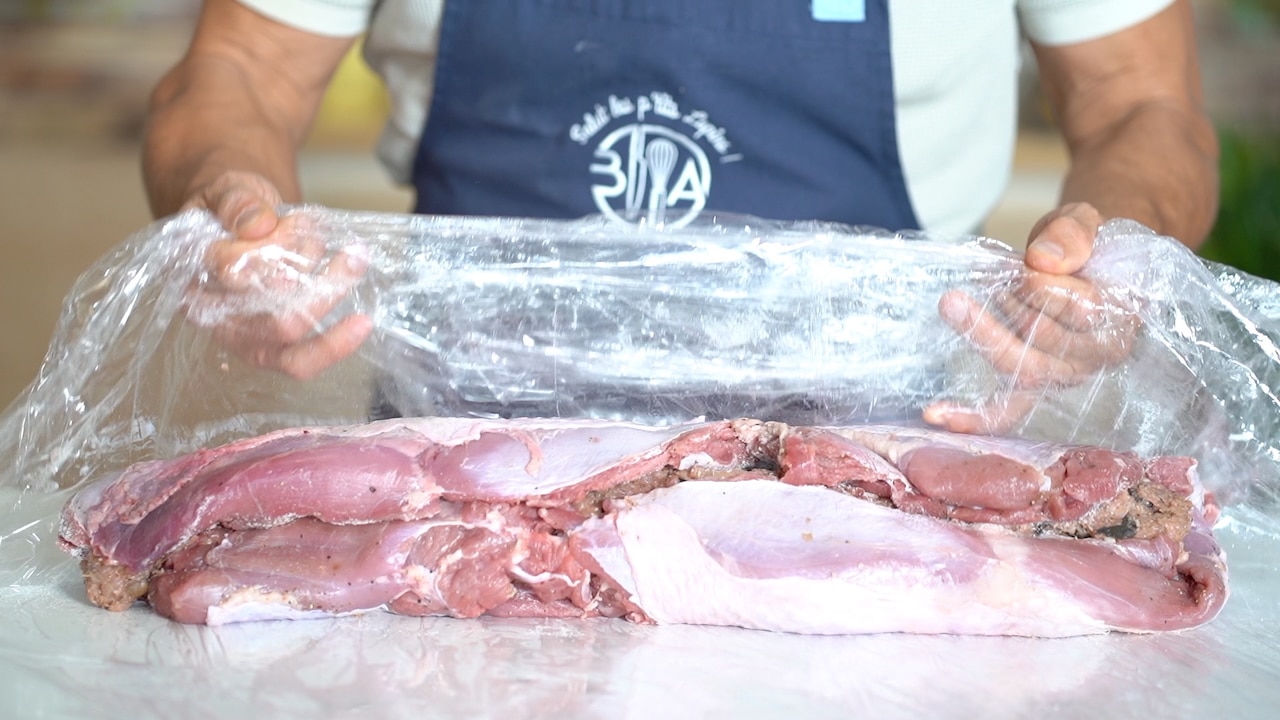
- Continue rolling ensuring the meat is evenly distributed. Tightly twist the ends of the plastic wrap and tie them into knots to seal. The length of the stuffed turkey log should measure 18-inch/46cm.

- Freeze the turkey roulade just until firm, about 2 hours. Then cut the roulade in half, unless you have the appropriate equipment to cook the whole log as is.

- Rewrap both roulades tightly, and refrigerate for up to 12 hours. At this juncture, wrapped turkey roulade can be stored in the freezer for up to 2 months. Let the frozen roulade thaw slowly for 2-3 days in the refrigerator before cooking.
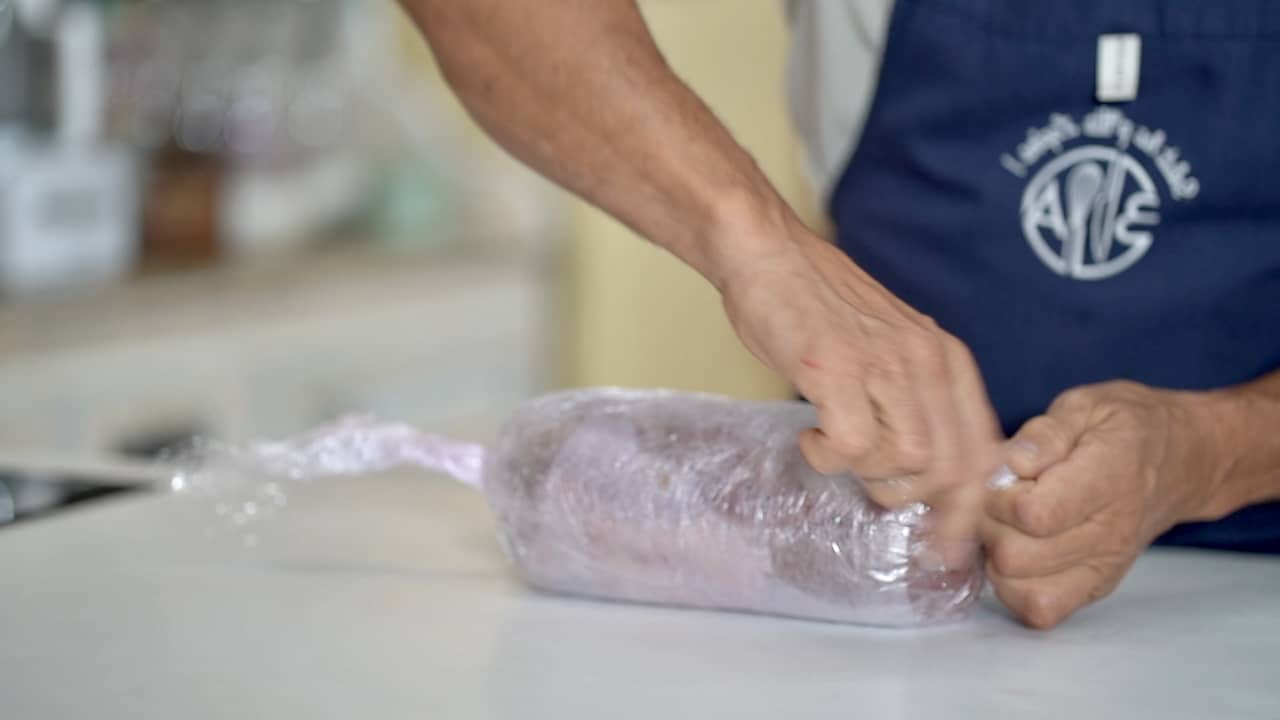
Sous-Vide Cooking vs Direct Heat
- Sous-Vide: You are precisely cooking the roulade in a temperature-controlled water bath to achieve a perfect, uniform doneness from edge to center. You finish it with a quick, high-heat sear for color and texture. Choose Sous-Vide if: Your top priorities are perfect, juicy doneness, foolproof execution, and stress-free timing for a special meal or dinner party. You are willing to invest in the equipment and don't mind the two-step process (water bath + sear).Direct Heat: This creates a significant gradient of doneness and requires careful management to avoid overcooking. Choose direct heat if you love the traditional roasting process. In short, sous-vide is about scientific control for a perfect result, while direct heat is a traditional art that relies on skill and intuition for a classic, roasted flavor profile.

Sous-Vide Cooking Method
- Vacuum-seal the already tightly wrapped in plastic film turkey roulade.
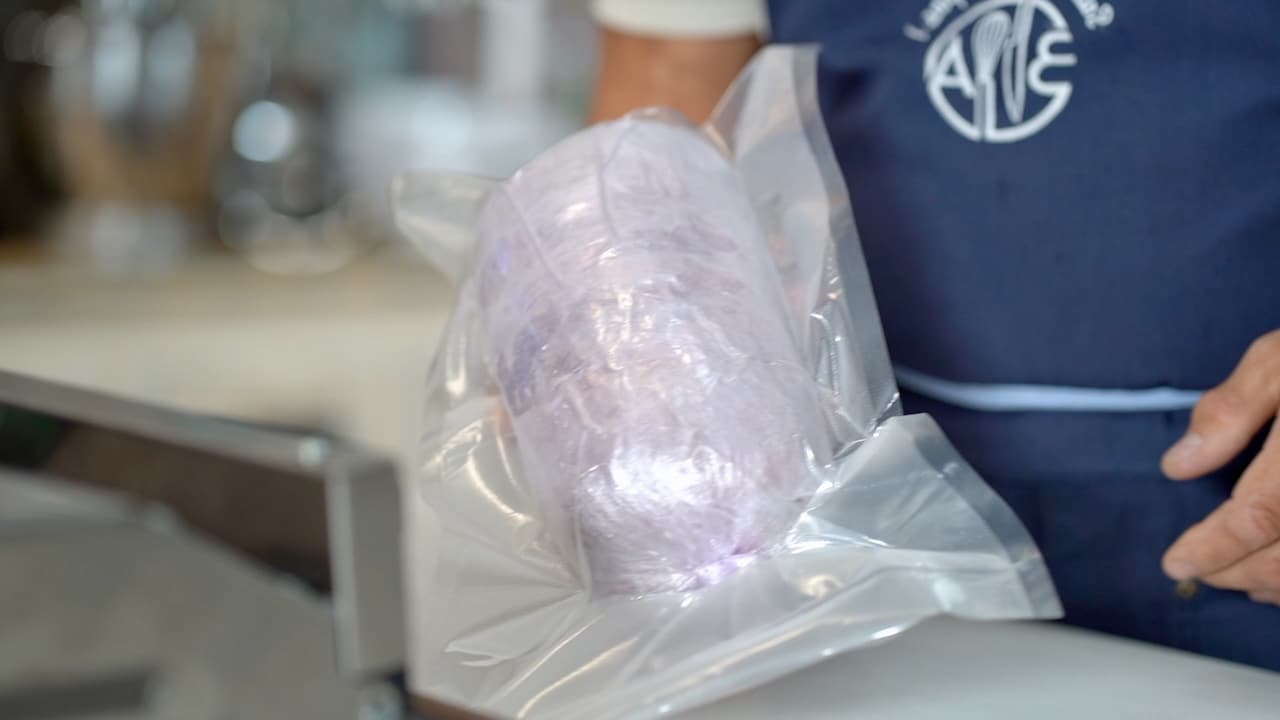
- Set your thermal immersion circulator to 165°F/74°C. Completely immerse the vacuum-sealed turkey roulade in the water bath. Cook for 6 hours. After cooking, immediately transfer the sealed roulade to an ice bath to stop the cooking process quickly. This step is crucial for food safety and texture. After an hour or so, remove the roulade from the cold water and refrigerate.

- Remove the chilled roulade from the plastic bag. Strain the rendered cooking liquid from the bag.
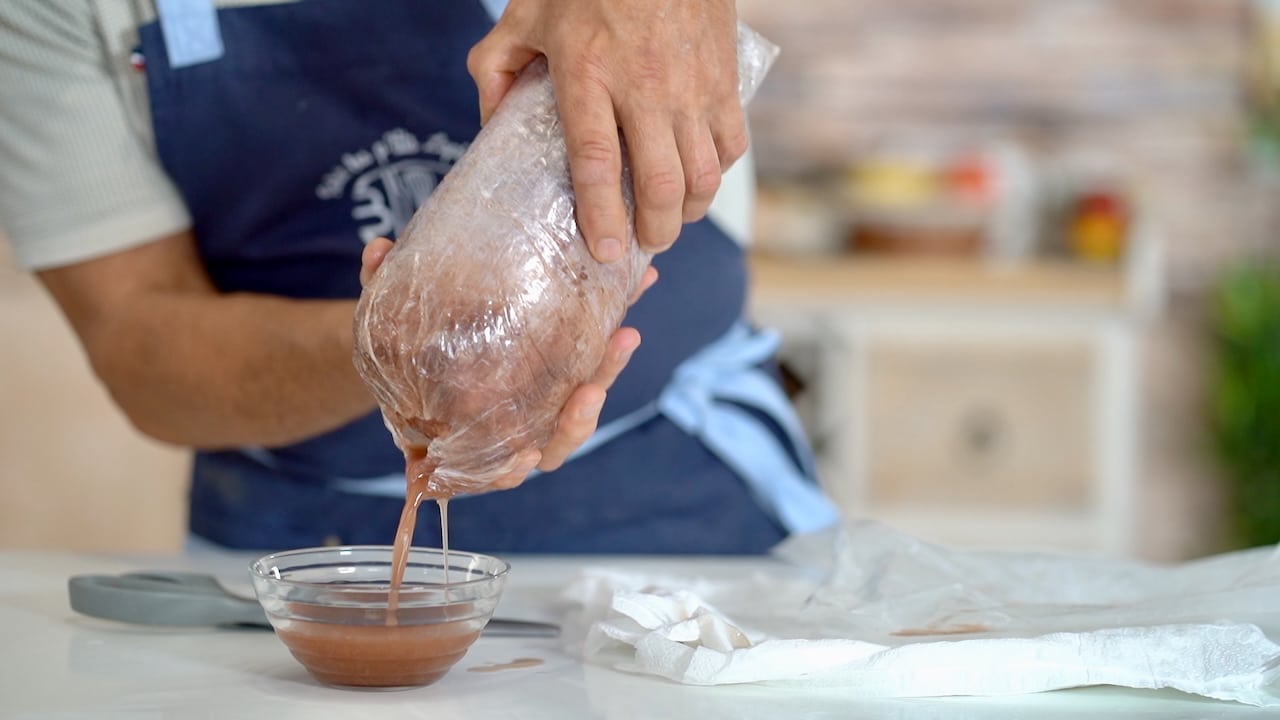
- Set this aside to use for the gravy.
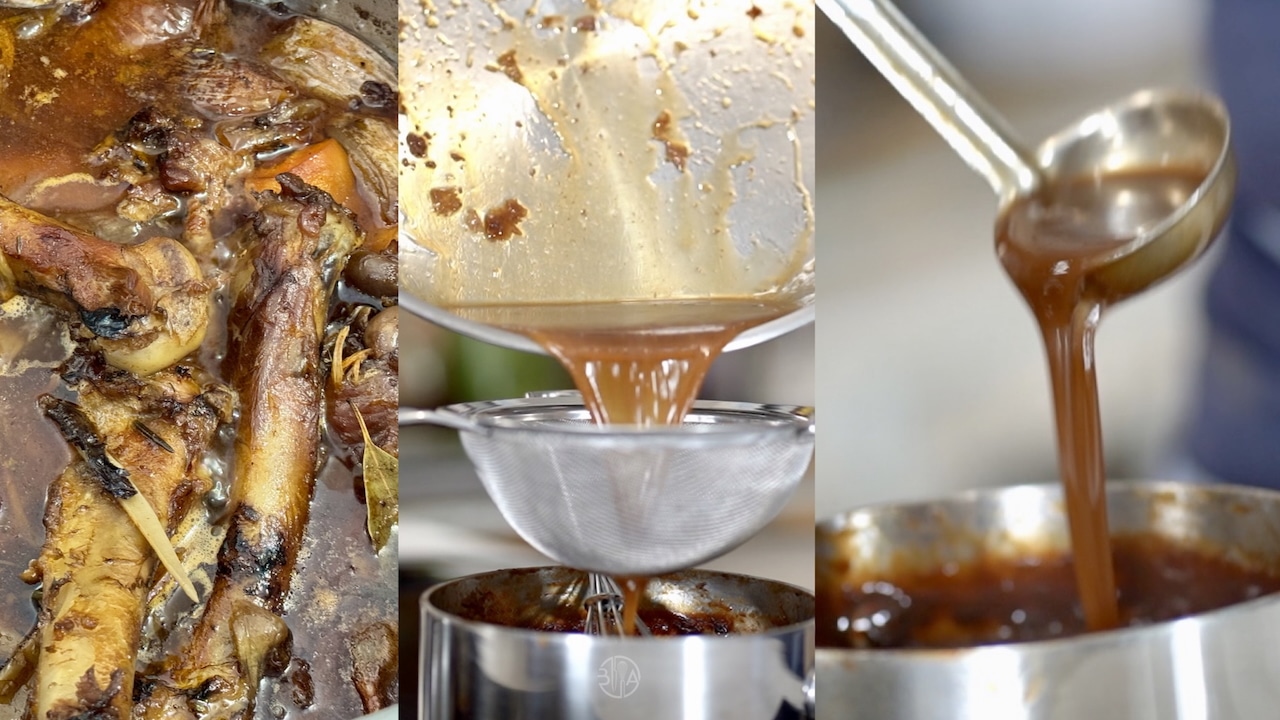
- The roulade is now cooked and ready to be sliced. You can serve it chilled or warm. Otherwise, rewrap in cling film for later use.
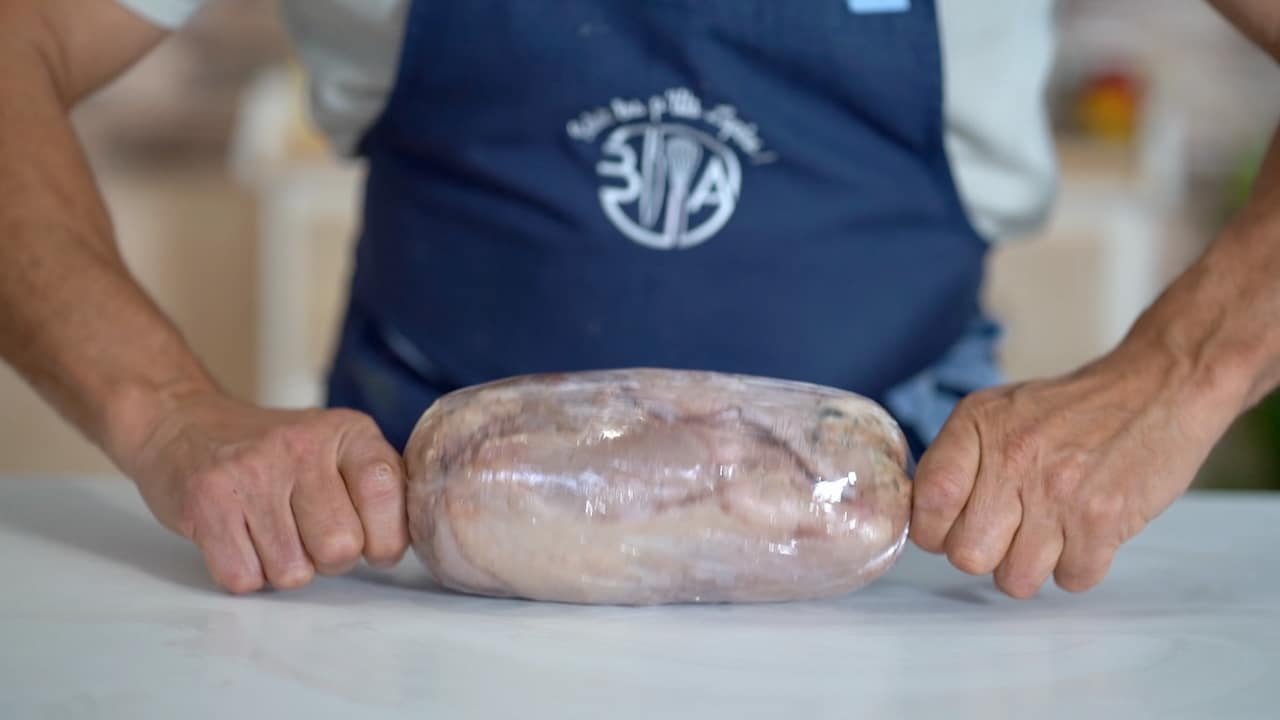
High-Heat Sear
- For a crispy finish: Pat the outside of the roulade completely dry with paper towels.

- Preheat your fan oven to 445°F/220°C. Place the cooked roulade on a baking tray lined with parchment paper. Sprinkle salt over the turkey skin. Sear for about 20 minutes, or until the skin is golden brown and crispy.

- Since the meat is already cooked through, there is no need to let it rest. Slice the turkey roulade immediately and serve with the gravy you made from the saved bones and reserved jus. Enjoy!
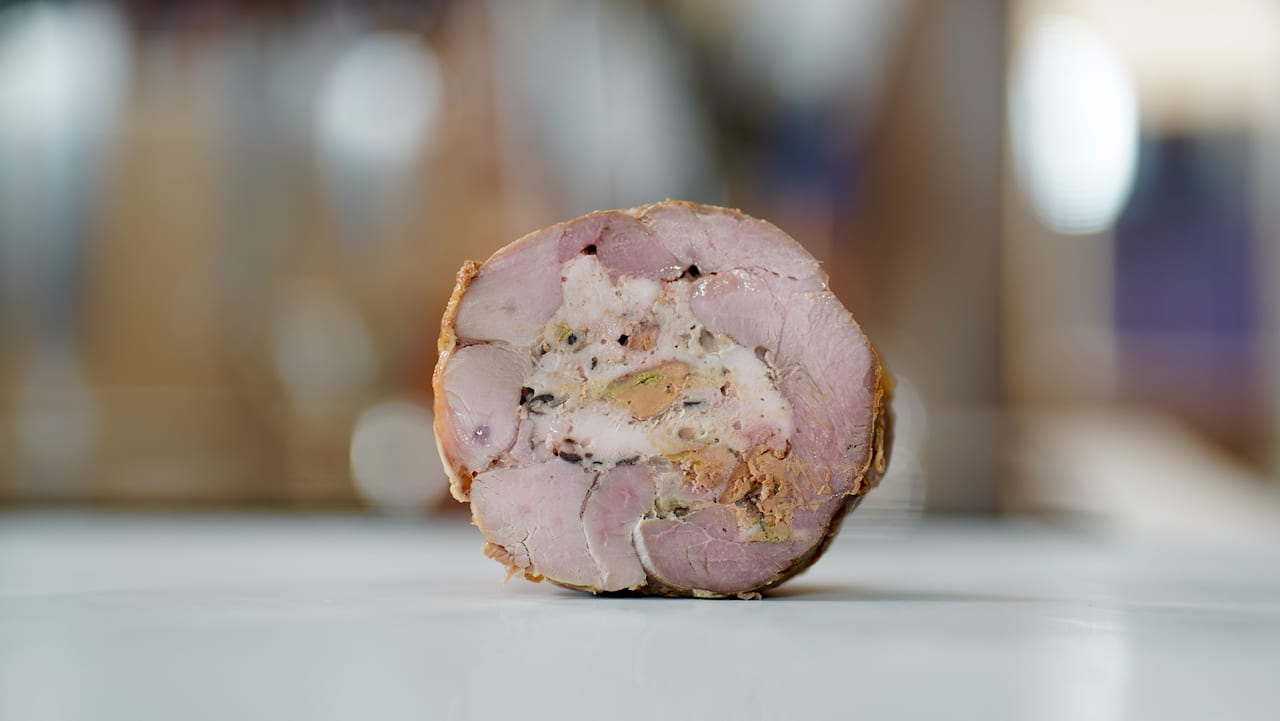
Traditional Roasting Method (Direct Heat)
- Unwrap the turkey roulade from the plastic wrap. Cut 10 pieces of twine about 10-inch/23cm. Place the roast (skin side up) on your cutting board with the ends facing you. Slide the middle of the twine under one end of the roast, about an inch from the end. Bring the two ends of the twine up and cross them twice over the top of the roast, secure with a knot.
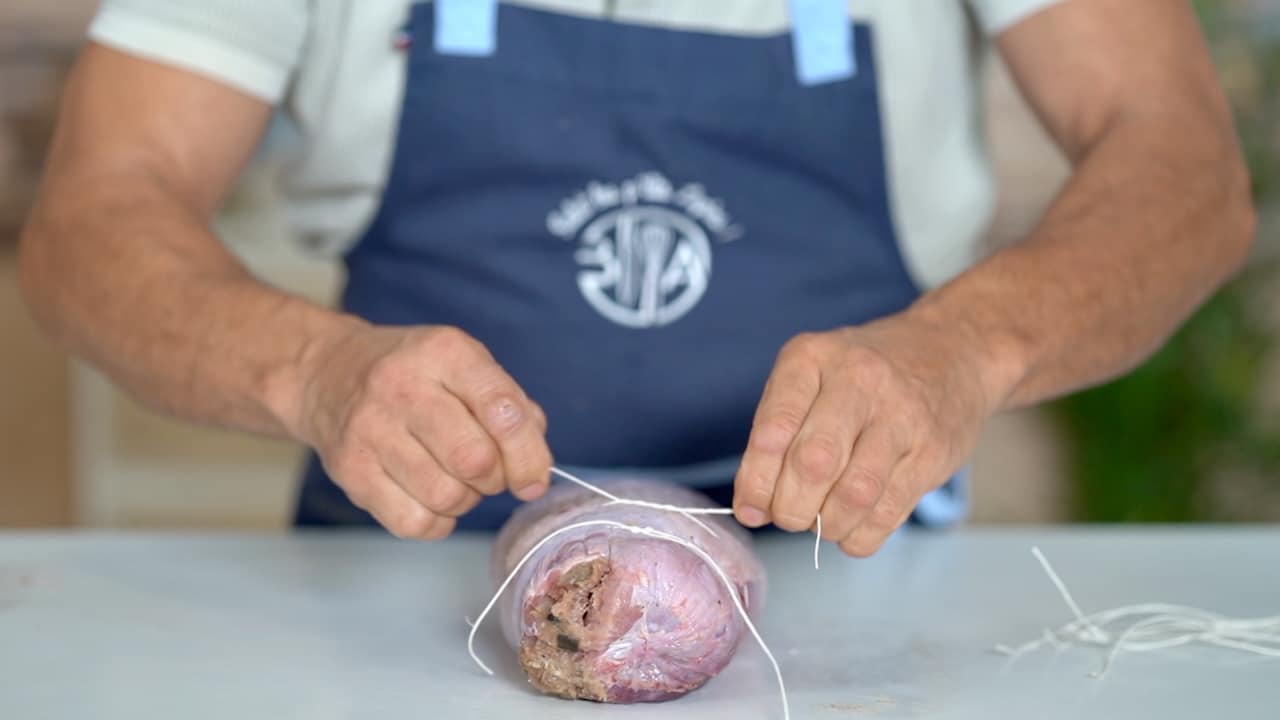
- Continue this process, spacing your loops about 1-inch/2.5cm apart, until the entire roast is trussed. Tie off the last loop with another secure square knot and trim the excess twine.

- Place the trussed roast on a roasting pan lined with parchment paper. Rub the skin with some duck fat, and season with salt.

- Cook at 350°F/180ºC for approximately 70 minutes (for a 3.9lb./1.8kg roast), or until the internal temperature in the thickest part of the meat reaches 160°F/71ºC. Remove it from the oven and let it rest for at least 30 minutes. During this time, the internal temperature will continue to rise by about 5°C/10°F, ensuring the turkey is both perfectly cooked and safe to eat. Save all the rendered juice for the gravy.

- Slice the roast into 8 portions.
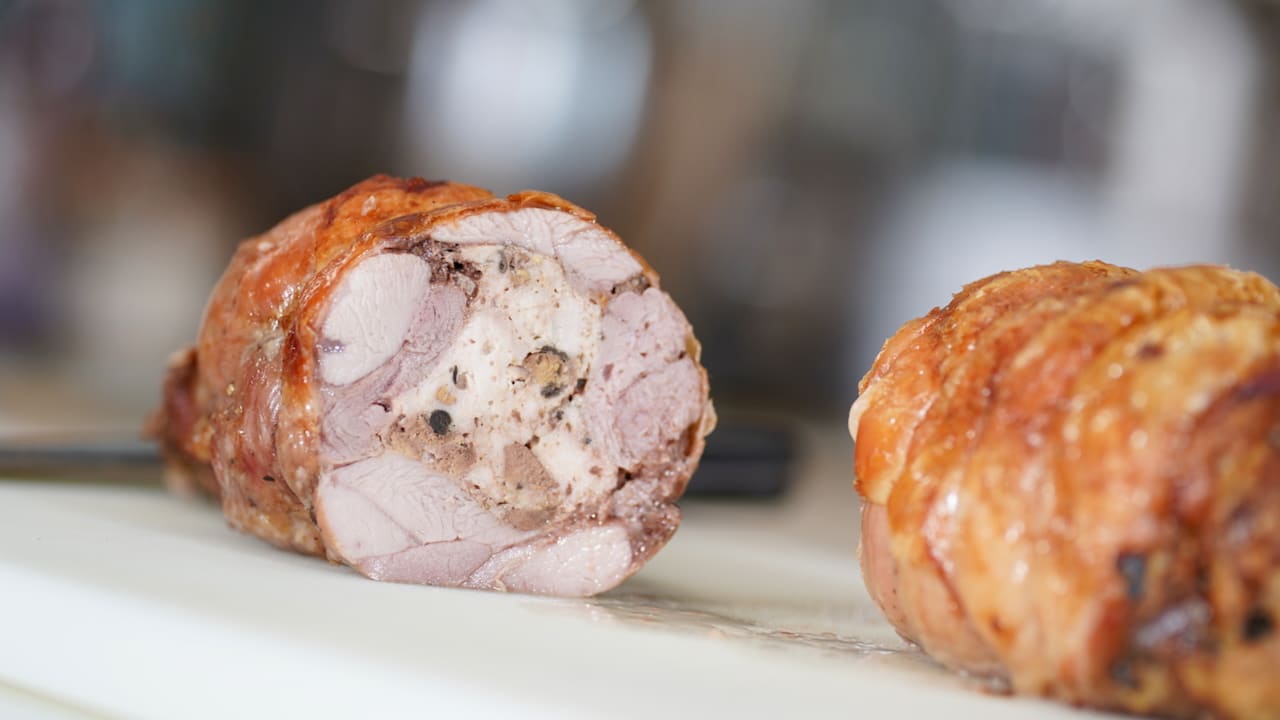
Plating Idea
- Plate turkey roulade with pumpkin strudel towers and gravy. Happy Thanksgiving!

Ready to discover this recipe? You're only 1 step away.
This recipe is only accessible to registered members!
Create your account to access all recipes and content of my website.
Join us now and enjoy more 800 recipes (Mostly French with European Influences, American Classics and Asian fusion)
Already register? Sign in
You might also like these contents...
Enjoy these free access recipes
Breakfast
Cronut
Entrees
How To Cut Potato Gratin
Cooking techniques
Deboning A Turkey Leg
Entrees
Rustic Ratatouille
Daily summer Recipe
Plum Slab Pie
Free Recipes
Chocolate Sauce
Free Recipes
Apricot Sablé Breton
Desserts
Sundae Ice Cream
Free Recipes
How To Decorate Ice Cream Cones
Free Recipes
Tapenade
Amuse Bouche
Zucchini-Basil Gazpacho
Free Recipes


